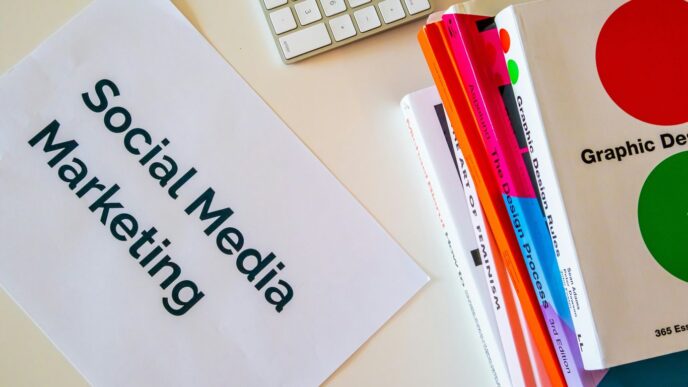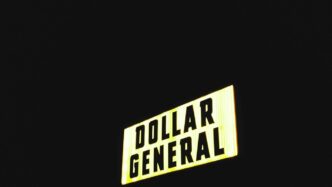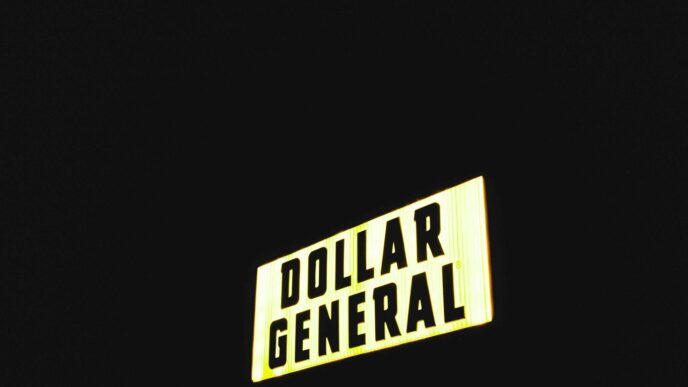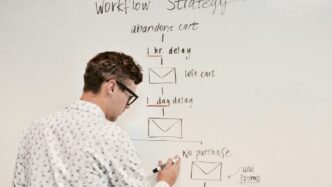So, you’ve got some news to share, and you want everyone to hear it. That’s where a press release comes in handy. But just sending it out isn’t enough anymore, especially with how much time people spend online. You’ve got to think about how to get your news seen on social media. It’s not just about writing a good announcement; it’s about making sure it actually gets noticed and does something. We’ll go over how to make your press release social media efforts work harder for you.
Key Takeaways
- Make your press release headline really grab people’s attention right away. It needs to be clear and interesting so folks want to read more.
- Don’t just write for reporters; write for regular people on social media. Keep it simple, use short sentences, and maybe some bullet points.
- Add pictures, videos, or cool graphics to your press release. This makes it way more interesting and likely to get shared online.
- Figure out the best times to post your press release on social media, thinking about when your audience is usually online and what else is happening in the news.
- After you share your press release, keep an eye on how people react. Reply to comments and see what worked so you can do better next time.
Crafting Compelling Press Release Content for Social Media

Okay, so you’ve got something important to announce. Maybe it’s a new product, a big company win, or some industry news you want to share. Just writing it up like you would for a newspaper isn’t going to cut it anymore, especially when you’re thinking about social media. You need to grab people’s attention fast.
Develop Captivating Headlines That Grab Attention
Your headline is like the cover of a book, right? If it’s boring, nobody’s going to pick it up. For social media, this is even more true. You’ve got seconds, maybe less, to make someone stop scrolling. Think about what makes you click. It’s usually something that sparks curiosity or promises a clear benefit. A good headline tells people exactly what they’re getting and why they should care.
Here’s a quick way to think about it:
- Clarity is King: What’s the main point? Say it plainly.
- Benefit-Driven: How does this help the reader or the world?
- Intrigue, Not Clickbait: Make them want to know more, but don’t lie about what’s inside.
- Keep it Short: Long headlines get cut off, especially on phones. Aim for under 70 characters if you can.
Write Engaging Content Tailored for Social Audiences
Remember, you’re not writing for a journalist who knows all the industry lingo. You’re writing for actual people, your potential customers, your fans, maybe even your neighbors. They’re busy, and they’re scrolling through a lot of stuff. So, your press release needs to be easy to read and interesting.
Think about these points:
- Short Paragraphs: Break up big blocks of text. Nobody wants to read an essay on their phone.
- Simple Language: Ditch the jargon. If you wouldn’t say it at a casual dinner, maybe don’t put it in your social post.
- Focus on the ‘So What?’: Why should anyone care about this announcement? What’s in it for them?
- Tell a Story: People connect with stories. How did this come about? What’s the human element?
Incorporate Valuable Quotes From Key Stakeholders
Quotes are great for adding a human touch and some authority. They can break up the text and give people a direct voice from your company. But don’t just put in any old quote. Make sure it adds something.
- Keep it Concise: A few good sentences are better than a long, rambling paragraph.
- Add Personality: Let the person’s voice come through. It makes it feel more real.
- Reinforce the Message: The quote should echo the main point of your press release, not introduce a totally new idea.
For example, instead of a generic quote like "We are pleased to announce this development," try something like, "This new feature is a game-changer for our users, simplifying tasks they used to dread," said Sarah Chen, our Head of Product. See? It’s more specific and tells you why it matters.
Enhancing Press Release Visibility Through Multimedia and SEO
Okay, so you’ve got your press release ready. Now, how do you make sure people actually see it, especially on social media where everyone’s scrolling super fast? It’s not just about writing it; it’s about making it pop.
Integrate Striking Multimedia Elements for Engagement
Honestly, text alone just doesn’t cut it anymore. People are visual creatures, right? Posts with images get way more attention – like, 650% more engagement than plain text. So, you gotta add some good stuff. Think high-quality photos of your product, your team, or that event you just held. Short videos, maybe 30 to 60 seconds, that quickly explain the main points of your announcement are also gold. And if you’ve got complicated data, an infographic can make it super easy to understand. It just makes your announcement way more interesting and shareable.
Optimize Press Releases for Search Engine Discoverability
This is where SEO comes in. You want your press release to show up when people search for things related to your news, not just right when you post it. If it ranks well in search results, it keeps bringing people to your announcement long after the initial buzz. It’s like a steady stream of visitors. Here’s a quick rundown of what to do:
- Use Keywords: Sprinkle your main and related keywords throughout the text. Don’t stuff them in, just make them sound natural.
- Hashtags: Add relevant hashtags. This helps people find you on social media.
- Links: Include links back to your website, blog, or product pages. This sends people where you want them to go.
- Alt Text: Optimize your images and videos with descriptive alt text that includes keywords. This helps search engines understand what your visuals are about and helps people who can’t see the images.
Instead of saying "our new software," try "our new AI-powered customer service software." See the difference? It’s more specific and searchable.
Balance Professionalism With Authenticity in Visuals
When you’re picking out those photos and videos, remember to keep it real. Yes, you want them to look professional and match your brand, but they also need to feel genuine. Overly staged corporate shots can feel a bit stiff. Try some behind-the-scenes stuff, maybe showing your team working or collaborating. It creates a better connection with people. Finding that sweet spot between polished and authentic is key. Also, think about how your visuals will look on different devices and platforms. Make sure images load fast and videos play smoothly. Nobody likes waiting around for stuff to load, you know?
Strategic Distribution and Promotion of Your Press Release
So, you’ve put together a killer press release. That’s great, but it’s only half the battle. Now you’ve got to get it in front of the right eyes. Just posting it on a newswire and calling it a day? That’s not going to cut it anymore. You need a plan, a real strategy, to make sure your news actually gets seen and, more importantly, acted upon.
Leverage Diverse Social Media Platforms for Maximum Exposure
Think of each social media platform as a different room in a big house. You wouldn’t use the same approach to talk to people in the living room as you would in the kitchen, right? It’s the same with social media. You need to tailor how you share your press release for each one.
- Facebook: This is a good place for a slightly longer post with a strong image. Think about telling a bit of the story behind the announcement.
- Twitter/X: You’ve got to be quick and to the point here. A punchy summary, maybe a key stat, and definitely some relevant hashtags.
- LinkedIn: This is your professional network. Frame your announcement as an industry insight or a business update. Keep the tone professional.
- Instagram: Visuals are king here. Use a great photo or a short video clip. Break down the key points into a carousel post.
- TikTok/Reels: If your audience is there, consider a super short, engaging video that highlights the main news. Think quick cuts and clear messaging.
Don’t just blast the same message everywhere; adapt it. This makes it feel more natural and less like spam, which means people are more likely to pay attention.
Utilize Strategic Hashtags to Boost Discoverability
Hashtags are like little signposts for social media. They help people find content they’re interested in. Using the right ones can make a huge difference in who sees your press release.
- Industry-Specific: Think #TechNews, #HealthcareInnovation, #SustainableFashion. These get your news in front of people already looking for that kind of information.
- Trending: If there’s a relevant trend happening, jumping on it with a hashtag can give you a temporary boost. Be careful though, make sure it actually fits your news.
- Branded: Always include your company’s hashtag, like #YourCompanyName or #YourProductName. This helps build recognition.
- General: #PressRelease, #News, #Announcement are okay, but they’re very broad. Use them sparingly and focus on the more specific ones.
Think about what terms someone would actually search for if they were looking for news like yours. A good mix is usually best.
Distribute Content Across Owned Channels and Newswires
Newswire services are useful for broad reach, getting your news out to a lot of places quickly. They’re like casting a wide net. But don’t forget about the places you already own and control.
- Your Website: Post the full press release on your own blog or news section. This is great for SEO and for people who come directly to your site.
- Email Newsletter: Send it out to your subscribers. These are people who have already shown interest in your company.
- Social Media (as mentioned above): This is where you actively promote it.
Combining newswire distribution with your own channels gives you the best of both worlds: broad visibility and targeted engagement with your existing audience.
Driving Action With Clear Calls to Action
So, you’ve put together a great press release, and you’ve shared it on social media. Awesome. But what do you actually want people to do after they read it? Just telling them about something cool isn’t always enough. You need to give them a nudge, a clear next step. That’s where calls to action, or CTAs, come in.
Include Strong, Actionable Calls to Action
Think about it: if you’re announcing a new product, do you want people to just know about it, or do you want them to check it out on your website? If it’s a webinar, are you hoping they’ll just think, "neat," or do you want them to sign up? Be specific. Instead of saying "Learn more," try something like "Visit our product page to see all the new features" or "Register now for our free webinar on [topic]." It’s about telling people exactly what you want them to do and, ideally, why it’s good for them.
Here are a few ideas:
- Visit our website: Direct people to a specific landing page for more details.
- Sign up today: Encourage registrations for events, newsletters, or early access.
- Download our guide: Offer a valuable resource in exchange for contact information.
- Contact us: Prompt inquiries for personalized consultations or quotes.
Ensure Calls to Action Stand Out and Are Persuasive
Just having a CTA isn’t enough; it needs to grab attention. Nobody’s going to click on a tiny, hidden link. Use formatting like bold text or, if the platform allows, a clear button. Make sure the link itself is easy to find and click. Placement matters too. Don’t bury your CTA at the very end where people might miss it. Put it somewhere logical within your post, where someone who’s just read something interesting will be ready to take the next step. The goal is to make it super simple for interested folks to go from reading your announcement to actually doing what you want them to do. It’s like leaving a clear path for them to follow.
Timing Your Press Release for Optimal Impact
Getting your press release out there at the right moment can make a huge difference in how many people actually see it. It’s not just about what you say, but when you say it. Think about it like this: you wouldn’t try to sell ice cream in a blizzard, right? Same idea applies here.
Identify Optimal Release Windows Based on Audience Habits
First off, you really need to know who you’re talking to. If your announcement is for people who work in offices, sending it out on a Tuesday or Wednesday morning, maybe around 9 or 10 AM, often works well. That’s usually when they’re settling in, checking emails, and catching up on industry news. Sending it late on a Friday? Probably not the best idea. People are already checking out for the weekend. For a more general audience, mid-morning during the week is usually a safe bet. It gives people time to wake up and get their day started, but they’re not yet swamped with tasks.
Here’s a general idea, but remember to test this for your specific audience:
- B2B Audiences: Tuesday, Wednesday, Thursday, 9 AM – 11 AM (local time)
- General Consumer Audiences: Tuesday, Wednesday, Thursday, 10 AM – 1 PM (local time)
- Avoid: Weekends, late Friday afternoons, and early Monday mornings.
Leverage News Cycles and Industry Events Strategically
This is where you get to be a bit of a news detective. Is there a big industry conference coming up? A major holiday related to your product or service? Or maybe a current event that your announcement ties into? If you can connect your news to what people are already talking about, journalists and your audience will pay more attention. For example, if you’re launching a new sustainable product, releasing it around Earth Day or during a big environmental summit makes a lot of sense. It feels relevant and timely. Don’t just drop your news into a vacuum; try to make it part of the ongoing conversation.
Adapt Timing Strategies Based on Performance Data
So, you’ve sent out a few press releases. What happened? Did one get way more attention than the others? Look at the data. See which days and times resulted in the most pickups, the most website visits, or the most social media shares. Maybe you found that a Thursday afternoon release actually did better than your Tuesday morning one. That’s okay! The goal is to learn and adjust. Keep a simple spreadsheet tracking your release dates, times, and key results. This way, you build up your own playbook for what works best for your company and your audience. It’s an ongoing process, not a one-time thing. What worked last year might not work today, so keep an eye on those numbers and be ready to tweak your schedule.
Measuring and Maximizing Press Release Performance
So, you’ve put all this effort into crafting and distributing your press release. That’s great! But the work doesn’t stop there. You really need to see how it’s doing, right? It’s like baking a cake – you don’t just pull it out of the oven and forget about it; you check if it’s cooked through and how it tastes. The same goes for your press releases. We need to figure out if all that hard work actually paid off.
Monitor Key Performance Indicators for Effectiveness
First things first, you’ve got to know what ‘good’ looks like for your specific announcement. What were you trying to achieve? Was it getting more people to visit your website, or maybe getting more people talking about your brand online? Depending on your goal, you’ll look at different numbers. For instance, if you wanted more brand awareness, you’d check how many times your company was mentioned on social media or in the news. If you were hoping to sell more of something, you’d track clicks to your product pages and see if sales went up.
Here’s a quick look at some common things to track:
- Website Traffic: How many people visited your site, and where did they come from (social media, news sites, direct)?
- Social Media Engagement: Likes, shares, comments, and mentions related to your press release.
- Media Pickups: Which news outlets or blogs actually published your story?
- Brand Mentions: How often is your company or product being talked about online?
- Conversions: Did the press release lead to desired actions, like signing up for a newsletter or making a purchase?
It’s important to look at both the immediate buzz and the longer-term effects. A quick spike in website visits is nice, but does that translate into lasting interest or sales?
Engage With Your Audience After Publishing
Once your press release is out there, people will start talking about it, especially on social media. You can’t just ignore them. If someone comments on a post about your announcement, try to respond. It shows you’re listening and that you care about what people think. This interaction can turn a one-time reader into a loyal follower. It’s also a chance to clear up any confusion or answer questions people might have.
Analyze Data to Refine Future Press Release Campaigns
This is where you really learn and get better. Look at all the numbers you collected. Did your press release do better on a Tuesday morning or a Friday afternoon? Did a certain type of quote get more attention? Were the pictures you used people actually clicked on? Use this information to plan your next press release. Maybe you’ll find that sending releases out on certain days works best for your audience, or that using more behind-the-scenes photos gets better engagement.
Think of it like this: you try something, you see what happens, and then you adjust your approach for next time. It’s a continuous cycle of trying, measuring, and improving. This way, each press release you put out will be more effective than the last.
Wrapping It Up
So, putting your press release out there on social media isn’t just about hitting ‘post.’ It’s about thinking ahead, making it look good with pictures or videos, and using the right words so people actually want to read it. Remember to tell people what you want them to do next, and don’t forget to promote it everywhere you can. Keep an eye on how it does, chat with people who comment, and use what you learn for next time. Doing this right means your news gets seen and remembered, which is pretty much the whole point.
Frequently Asked Questions
What makes a press release headline good for social media?
A great headline for social media is short, clear, and exciting. It should tell people the most important part of your news right away and make them want to learn more. Think of it like a catchy title for a video or a really interesting book cover – it needs to grab attention fast!
Why should I use pictures and videos in my press release for social media?
People on social media love looking at pictures and watching videos! Posts with visuals get way more attention than just plain text. Adding cool images or short videos makes your news more interesting and easier to share, helping more people see it.
How do I make sure people find my press release on social media?
Using the right hashtags is like putting up helpful signs. Mix general ones like #News with specific ones for your topic, like #Tech or #NewProduct. This helps people who are searching for that kind of information find your post easily.
Should I write my press release differently for social media than for a newspaper?
Yes! For social media, you want to be more direct and use simpler words. Break up long sentences and use bullet points to make it easy to read quickly. It should sound more like you’re talking to a friend, but still be professional.
What’s a ‘call to action’ and why is it important?
A call to action tells people exactly what you want them to do next, like ‘Visit our website’ or ‘Sign up now.’ It’s super important because it guides your readers and helps them take the next step, which is usually what you want them to do after reading your news.
How do I know if my social media press release worked well?
You can tell if it worked by looking at numbers! See how many people liked, shared, or commented on your post (that’s engagement). Also, check how many people clicked on your links. These numbers show you what people liked and help you do even better next time.














